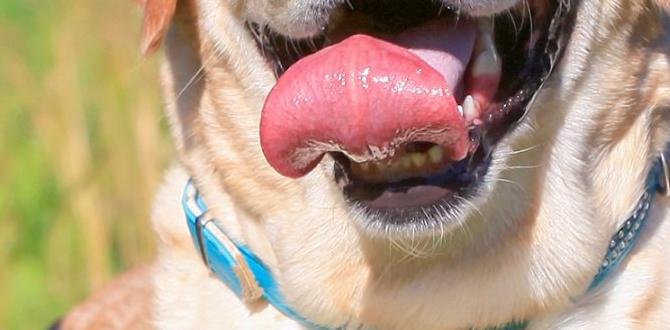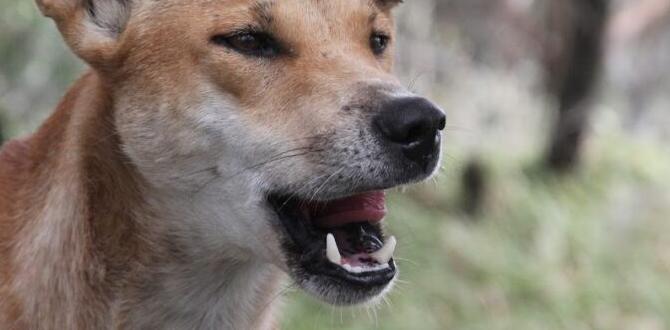Quick Summary:
To fast-track solutions for dog digging problems, focus on understanding your dog’s needs. Provide ample exercise, mental stimulation, and appropriate outlets for digging, like a designated sandpit. Consistency in training and redirecting their behavior is key to a quick resolution.
It’s a scene many dog parents know all too well: a perfectly manicured lawn suddenly resembles a war zone, complete with gaping holes and a proud, muddy pup. Dog digging problems can be incredibly frustrating, turning your gardening dreams into a disaster. But don’t despair! This isn’t usually a sign of a “bad” dog, but rather a dog acting on instinct or a need that isn’t being met. Luckily, with a little understanding and some practical steps, you can manage and even solve your dog’s digging habits quickly and effectively. Let’s dive into how we can get your yard (and your sanity!) back.
Why Do Dogs Dig? Understanding the Root Cause
Before we can fix a behavior, it’s super helpful to understand why it’s happening. Digging is a natural, instinctual behavior for dogs, much like wagging their tail when they’re happy. Different breeds have different predispositions; terriers, for example, were bred to dig for prey. But even non-terriers dig. Common reasons your furry friend might be developing a penchant for excavation include:
- Boredom and Excess Energy: A dog with pent-up energy and not enough to do will often find their own entertainment, and digging is a great way to expend both. This is especially true if they aren’t getting enough physical exercise or mental stimulation.
- Seeking Comfort or Escape: Sometimes, dogs dig to create a cooler spot to lie in during hot weather, or they might be trying to escape an uncomfortable situation, like loud noises or being left alone for too long.
- Hunting Instincts: Prey animals like rodents or insects might be living underground, and your dog’s natural hunting drive kicks in.
- Attention Seeking: If digging gets a big reaction from you (even a negative one!), your dog might continue doing it because it’s a guaranteed way to get your attention.
- Burying Treasures: Some dogs like to bury bones, toys, or other prized possessions for safekeeping.
- Anxiety or Stress: Digging can be a coping mechanism for anxious or stressed dogs.
Understanding which of these might be driving your dog’s digging is the first step to a fast solution. Observe when and where your dog digs, and what happens before and after. This detective work will guide your strategy.
Fast-Track Solutions: Essential Steps to Stop Dog Digging
Ready to implement some solutions? The key to solving dog digging problems fast is consistency and addressing the underlying cause. Here’s a practical, step-by-step approach:
Step 1: Boost Physical Exercise
A tired dog is a well-behaved dog! Just like humans, dogs need regular physical activity to burn off energy. Insufficient exercise is one of the biggest culprits behind destructive behaviors like digging.
- Daily Walks: Aim for at least one to two brisk walks each day, depending on your dog’s breed, age, and energy level.
- Playtime: Engage in active play sessions like fetch, tug-of-war, or frisbee.
- Running: If you have a safe, enclosed area, letting your dog run freely can be incredibly beneficial.
A good rule of thumb is that most adult dogs need at least 30-60 minutes of vigorous activity daily. For puppies and senior dogs, this might be shorter but more frequent. Websites like The American Kennel Club (AKC) offer breed-specific exercise recommendations.
Step 2: Provide Ample Mental Stimulation
Physical exercise is crucial, but mental engagement is just as important. A dog whose brain is engaged is less likely to get bored and resort to digging. Think of it as giving them a “job” to do.
- Puzzle Toys: Food-dispensing toys like Kongs or puzzle feeders can keep your dog occupied for extended periods.
- Training Sessions: Short, regular training sessions practicing basic obedience commands or teaching new tricks are excellent for mental workout.
- Nose Work Games: Hide treats around the house or yard and encourage your dog to find them. This taps into their natural scent-tracking abilities.
- Chew Toys: Offer a variety of safe and durable chew toys to satisfy their urge to chew and occupy their minds.
The Humane Society of the United States has many great ideas for enriching your dog’s life.
Step 3: Redirect the Digging Behavior
If your dog is digging in a specific area, like your flowerbeds, you can try to redirect this urge to a more acceptable location.
- Create a Designated Digging Pit: This is one of the most effective long-term solutions. Choose a spot in your yard (or even a large sandbox) and fill it with sand or loose soil. Bury toys or treats in it to make it more appealing.
- Positive Reinforcement: When you see your dog digging in their designated pit, praise them enthusiastically and offer a special treat.
- Interruption and Redirection: If you catch your dog digging where they shouldn’t, don’t punish them harshly. Instead, calmly interrupt them with a sound (like a clap) and immediately redirect them to their digging pit or a favorite toy.
The goal is to teach your dog that where they dig matters, not to stop digging altogether.
Step 4: Make Unwanted Digging Areas Unappealing
You can also make the “no-dig” zones less attractive. This often works best in conjunction with providing an acceptable alternative.
- Burying Rocks or Fencing: Place large rocks or wire mesh just below the surface of the soil in your gardens. This makes digging uncomfortable or impossible.
- Using Scents: Some dogs are deterred by specific scents. Citrus peels, cayenne pepper (use with caution and don’t overdo it, as it can irritate noses), or commercial dog repellents can sometimes work. Always test these in a small area first and ensure they are pet-safe.
- Covering Holes: If your dog has already started digging, fill the holes immediately, ideally with something unappealing, like rocks or buried logs, before smoothing over.
Remember, the aim is to make the desired digging spot rewarding and the undesired spots inconvenient.
Step 5: Address Underlying Stress or Anxiety
If your dog’s digging seems to be triggered by anxiety, such as separation anxiety, you’ll need to address the root cause. Digging can be a symptom of a larger issue.
- Identify Triggers: What situations make your dog anxious? Is it being left alone, loud noises, or changes in routine?
- Counter-Conditioning and Desensitization: For separation anxiety, gradual desensitization to your departures and positive associations with your absence can help.
- Safe Space: Ensure your dog has a comfortable, secure den-like space where they feel safe when you’re away or during stressful events.
- Consult a Professional: For severe anxiety, consult a veterinarian or a certified professional dog trainer/behaviorist. They can help assess the situation and develop a tailored plan. Organizations like the Certification Council for Professional Dog Trainers (CCPDT) can help you find a qualified professional in your area.
Treating anxiety often requires patience and professional guidance, but it’s essential for your dog’s overall well-being and can solve compulsive digging behaviors.
Tools and Aids for Digging Deterrents
Sometimes, a little extra help can go a long way when trying to curb digging habits quickly. Here are a few tools and aids that can be useful:
| Tool/Aid | How it Helps | Best For |
|---|---|---|
| Designated Digging Box/Sand Pit | Provides an acceptable outlet for digging instinct. | Dogs with strong digging urges, especially terriers or scent hounds. |
| Puzzle Feeders & Treat-Dispensing Toys | Offers mental stimulation and keeps dogs occupied, reducing boredom. | Bored dogs, dogs left alone for periods. |
| Strong, Safe chew toys | Satisfies chewing and gnawing needs, diverting energy. | All dogs, especially those with teething puppies or high chew drive. |
| Wire Mesh or Landscape Fabric | Buried just below the surface, it discourages digging in specific areas. | Protecting garden beds, flower pots, and other sensitive areas. |
| Pet-Safe Repellents (e.g., citrus, specific scents) | Deters dogs from scent-based, naturally appealing digging spots. | Areas where natural deterrents are safe and effective. |
| Leash and Harness | For supervised outdoor time, preventing unsupervised digging. | Immediate supervision, training, and preventing escape during the transition phase. |
Common Digging Scenarios and Quick Fixes
Let’s look at some typical digging scenarios and how our solutions apply to tackle them fast:
- The “Escape Artist” Under the Fence: Problem: Dog digs under the fence to get out. Fast Solution: Bury wire mesh or rocks along the fence line to block escape routes. Ensure they’re getting enough exercise and mental stimulation so they don’t feel the need to leave. If it’s about boredom, increase playtime. If it’s about escaping something, address the source of fear or discomfort.
- The “Hot Spot Digger”: Problem: Dog digs to lie in a cool spot on hot days. Fast Solution: Provide cooling mats, access to shade and fresh water, or limit their time outside during peak heat. A kiddie pool filled with water can also be a great relief.
- The “Treasure Buryer” in the Lawn: Problem: Dog buries bones or toys in the yard. Fast Solution: Provide a designated digging pit. If they try to bury in the lawn, calmly redirect them to their pit. You can also limit access to high-value items outdoors if this is a persistent issue, or only give them these items when supervised indoors.
- The “Rodent Hunter” in the Garden: Problem: Dog digs for small critters. Fast Solution: Block access to areas where you know pests are active. If you can’t eliminate the prey, make the digging spots in the garden unappealing with buried debris or protective coverings. Increase their “prey drive” playtime with toys they can “catch.”
Remember, consistency is key. If you apply these solutions consistently, you’ll see results much faster.
Preventing Future Digging Problems
Once you’ve made progress, you’ll want to keep the digging under control. Prevention is always easier than cure!
- Maintain Exercise & Stimulation Routine: Don’t let up on those daily walks, playtime, and puzzle toys, even when the digging stops.
- Regular Yard Checks: Keep an eye out for any new “hot spots” for digging and address them proactively.
- Secure Fencing: Ensure your fences are secure and there are no easily accessible escape routes.
- Supervision: Continue to supervise your dog, especially when they are in areas prone to digging.
- Consistent Training: Reinforce good behavior and redirect any budding digging attempts.
A well-exercised, mentally engaged, and confident dog is far less likely to develop problematic digging habits. Building a strong bond through positive reinforcement training also makes your dog more receptive to your guidance.
Frequently Asked Questions About Dog Digging
My dog digs holes just to dig them! What can I do?
This is often due to boredom or excess energy. Ensure your dog is getting at least 30-60 minutes of vigorous physical activity daily and plenty of mental stimulation through puzzle toys or training. Providing a designated digging pit can also give them an appropriate outlet.
Is it possible to completely stop a dog from digging?
It’s very difficult to eliminate digging entirely, as it’s a natural instinct. The goal is to redirect this behavior to acceptable locations and manage it so it doesn’t become a problem. For most dogs, a designated digging area is the most realistic and effective solution.
My dog digs up my flower bulbs. How can I prevent this?
Plant your bulbs deeper, or use chicken wire or hardware cloth just below the soil surface where you plant them. You can also try deterrent scents around the flowerbeds. Make sure your dog isn’t digging out of boredom or hunger for something else.
Can I punish my dog for digging?
Punishment is generally not effective and can create fear or anxiety, potentially worsening the behavior or leading to new problems. It’s much more effective to understand why your dog is digging and then address that root cause with positive methods like redirection and providing alternatives.
My puppy is digging. Should I be worried?
Puppies often dig out of playfulness, curiosity, or sometimes to try and find a den-like space. Focus on teaching them appropriate behavior from a young age. Provide plenty of toys, ensure they have enough rest and playtime, and redirect any digging attempts to a designated area or toy.
Is digging a sign of a sick dog?
While digging is usually a behavioral issue, it can sometimes be linked to underlying medical conditions or discomfort that causes a dog to seek relief (e.g., skin irritation leading to scratching/digging). If digging is a sudden new behavior, or accompanied by other symptoms like lethargy, loss of appetite, or skin issues, it’s best to consult your veterinarian for a thorough check-up.
Conclusion
Tackling dog digging problems fast is entirely achievable with the right understanding and approach. By focusing on your dog’s needs for exercise, mental engagement, and providing appropriate outlets for their natural behaviors, you can transform your backyard from a digging disaster zone into a peaceful retreat. Remember to be consistent, patient, and positive. Celebrate the small victories, and don’t hesitate to seek professional guidance if your dog’s digging is linked to significant anxiety. Your dog will thank you, and your garden will too!
Meet Elyse Colburn, the devoted canine companion and storyteller behind the enchanting world of “Tales, Tails, and Adventures Unleashed.” A passionate dog enthusiast with a heart full of paw prints, Elyse Colburn shares heartwarming tales and insightful adventures, celebrating the joy, loyalty, and endless antics that make every dog a true hero. Join Elyse Colburn on this tail-wagging journey, where every post is a love letter to our four-legged friends.







